The tip to beautiful skin is exfoliating. Having a good exfoliating routine is the key to the smooth and glowing skin. Here is all you need to know about exfoliating for your skin type and colour so that you can make the most of your beauty routine.
What Is Exfoliation?

Before you even think about exfoliating, you need to know what it is and what it does. This is the process of removing the dead skin cells from the body, so your newer, fresher skin cells are left at the top. Your skin feels smoother and looks much more radiant that it did just before.
You’ll also find that it can clear the pores of all the dirt and oils much easier, so you’re left with cleaner skin ready for your day or night ahead.
Exfoliation can also rejuvenate the skin. During the winter, it is easy to want to hide away. Your skin may not get as much sun as it needs, and it starts to look dull. By creating a beauty routine that you follow throughout the year, you will have sun-ready skin all the time.
Most people will exfoliate their faces on a daily basis. Many facial cleansing products come with microbeads that help to clear away the dead skin cells. However, most will forget about the rest of their body. It can leave dull looking shoulders and legs when it comes to bikini weather or those gorgeous evening gowns.
Exfoliating can also help make dry skin look smoother and softer. You get rid of the flakes that appear. However, you may need to work your exfoliating routine in with your moisturising routine to really get the best benefit.
The History of Exfoliating
Just how was exfoliating discovered? The roots come from the Ancient Egyptians, who founded the initial practice of exfoliating for healthier looking skin. It wasn’t quite the same as it is today, but the Egyptians did have some skin care routines that are still used today.
Fast forward to the Middle Ages, and the people found other ways to boost the feel and look of their skin. The wine was just one of the options used, because of its tartaric acid.
Tartaric acid is organic and found in grapes and other plants. Most people would know it as the cream of tartar, but it is actually salt and develops through the winemaking process. If you have baking powder in the house, you have a non-alcoholic version of tartaric acid. It is mixed with sodium bicarbonate to make the ingredient.
Asia also developed an exfoliation process hundreds of years in the past. Some of the processes are still used today, just like those developed in Ancient Egypt.
Is Exfoliating That Important?
Did you know the body naturally gets rid of all its dead skin cells? It can make many people wonder whether there is a need to exfoliate if that is the case.
The body sheds 30,000-40,000 dead cells each minute. While it can help make the skin look good naturally, there are other benefits that you lose out on when you don’t exfoliate once a week. It’s not just about getting smooth skin, but about removing the chance of suffering from acne.
Acne isn’t just due to dirty skin. It’s due to the pores getting blocked, and that can be from dirt or even natural oils that the skin produces. The exfoliating process helps to open the pores so that the skin can breathe properly and the oils can be released fully.
It is a necessary stage of the beauty routine if you want the best-looking skin. You have smoother, healthier-looking skin that has fewer pimples and blackheads.
While doing all this, it can also offer the benefit of better blood circulation. Improving the blood circulation around your body is beneficial for some reasons, and not just for the look of your skin. It can help to bring back some colour to your skin, and improve the elasticity. It will also help to reduce the look of scars and cuts. Improved blood circulation also means that other organs and the brain will get more oxygenated blood.
If you have oily skin, you can find exfoliating extremely beneficial. Not only will you remove the dead skin cells, but you can remove excess oil out of the pores. In some cases, it can help to restore the natural balance of the oil. Those with oily skin have a thicker Epidermis layer, and exfoliating can get within it and clean it completely.
Watch Out for Over-Exfoliating

While exfoliating is good for the skin, it is only beneficial in moderation. There is such a thing as too much of a good thing, and too much exfoliating can be bad for you. This is especially the case for the black or Asian skin.
When it comes to darker skin, exfoliating can lead to pigmentation issues. You may end up with lighter patchy spots due to hyperpigmentation due to the skin being damaged or irritated.There is also some evidence to suggest that over-exfoliating leads to the stratum corneum being more compact, higher levels of sebum secretion and larger pores in the black skin.This could lead to more acne-causing bacteria getting into the pores, so more acne appears.
For Asian skin, too much exfoliating can lead to sensitivity to chemical elements as the barrier function within the skin becomes weaker. The skin already has a weaker function, so more scrubbing just makes it worse.
While white skin may not have all the same problems, there is still irritation involved with too much scrubbing. This will also depend on how fair and dark the skin is, and how sensitive a person’s skin is. If something hurts or just doesn’t feel right, chances are you are over-exfoliating and need to stop.
Exfoliating Sensitive Skin
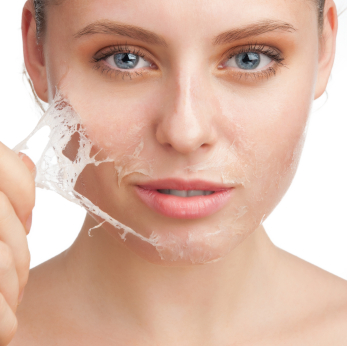 Image Source: MotherCity
Image Source: MotherCity
Likewise, if you have sensitive skin, you need to get a product that is suitable. This is more than just looking at a label that says “for sensitive skin.” You need to look at the ingredients to make sure it doesn’t have anything that irritates your skin.
Those with skin conditions like eczema and psoriasis can still exfoliate, but it is worth doing it with natural ingredients or through softer means. Dry brushing could be a better option; more on that to come.
Try any product on a small area of the skin, first. On the wrist or ankle is usually the best as the areas are easier to hide and you will be able to see visibly if there is an irritation right away. Don’t worry about initial redness, but look out for prolonged problems.
In some cases with sensitive skin, you won’t need to use an exfoliant. The process of flannel with a lotion will be enough. This is something to consider when using on skin conditions; using a lotion that is suitable for your particular condition.
The face tends to be more sensitive than anywhere else. Using a mild exfoliant is recommended, but more on this to come later.
How Often Should You Exfoliate?

With all that in mind, just how much is too much? This will depend on the method of exfoliating and your skin type.
When you are using an exfoliator, chances are you won’t need to use it more than once a week. The skin will take 20-40 days to renew once you are passed your teenager years (due to puberty these times can be shorter or longer during the teen years), so you don’t want to do it too often. Once a week is encouraged by many dermatologists because you get the best of both worlds; protected but clear skin.
Mechanical exfoliation causes more irritation to some skin types and is more likely to lead to post-inflammatory pigmentation. Products that use mechanical exfoliation include scrubs, microdermabrasion and loofahs. You can buy non-scrubbing exfoliators, which offer a gentler method and peel elements rather than physically scrubbing it all away.
A little does go a long way, with any type of exfoliate. Not only will this work out better for your skin, but it is also better for your bank balance. Your products last longer, so you don’t need to buy them as often.
The only people who should exfoliate more often are those with oily skin. This is due to the excess oils and grime that can get within the pores. You won’t need to do it more than twice a week.
Exfoliating Your Face vs. Exfoliating Your Body

There is a difference between the skin on your face and your body, and this means your exfoliating methods need to be different. The facial skin is much softer and more delicate, so you need to be less harsh when it comes to scrubbing. Likewise, the skin on your body can differ depending on the location. The back tends to be tougher than the chest and stomach, so you may find that you can be a little harsher with the scrubbing on the back to get rid of all the dead skin cells.
Loofahs tend to be preferred when it comes to the back since you can actually reach all the areas. However, you may find a softer Mitt is better and you will just need to do a little more reaching. When it comes to your face, a loofah or Mitt will not be needed. The exfoliating gel or cream with your hands will be enough to protect the softness of the skin.
Some redness will appear on any part of the body you exfoliate. This is to be expected, considering the process of scrubbing the skin and removing the dead cells. However, it should not cut the skin or make it bleed. You should not suffer any problems hours later. In most cases, a blast of cold water will help to remove the initial redness, and prevent irritation later.
Methods of Exfoliation
There are three main types of exfoliation. You can do it through mechanical methods, chemical means or during the process of hair removal.
Mechanical processes are the most commonly used options around the world. An abrasive is used on the skin, to scrub the dead skin cells away. You could buy a facial cream with microbeads, natural methods with sugar or salt, a pumice stone for your feet or even microfiber cloths. Loofahs and brushes are also common options.

In some parts of the world, the products aren’t easy to find and use. One natural method is to use the fingernails to scrape the dead skin cells away.
If you have dry skin, it is usually best to avoid many mechanical exfoliants. They will just dry out the skin further, so it doesn’t get the benefit of looking healthier and fresher with the newer skin cells. That being said, a good beauty routine and the help of a dermatologist can help to get the best-looking skin with these often cheaper, over the counter options.
Microdermabrasion has become popular, especially in Western cultures, and is another mechanical option. More on this method to come.
Scrubs can also be used for chemical methods. Rather than using micro-beads, the chemical scrubs will use ingredients like citric acid, glycolic acid, salicylic acid, malic acid and fruit enzymes. Many will be created and applied by medical professionals, as too much can cause problems to the skin. There are some over the counter products available, but the ingredients will be much lower in concentration.
The idea of many chemical exfoliating products is that the enzymes and acids will loosen the cells, by removing some of the substance that holds them together. It makes it easier just to wipe the dead skin cells away.
Those who suffer badly from acne will often be recommended to try chemical exfoliates. It is considered better, since it does not irritate the skin as much and avoids using products that can mess with the oil balance in the skin.
 Image Source: Pinterest
Image Source: Pinterest
Chemical exfoliating is something the Middle Ages people used through the use of wine. Grapes that make wine are still used today in continental Europe, where chemically exfoliates are used within most beauty spa routines. Vino therapy is just one type of treatment that has become extremely popular over the years.
The third option is using hair removal to exfoliate your skin. If you are going to remove the hair, it could be worth considering to help limit the amount of products you use on your skin.
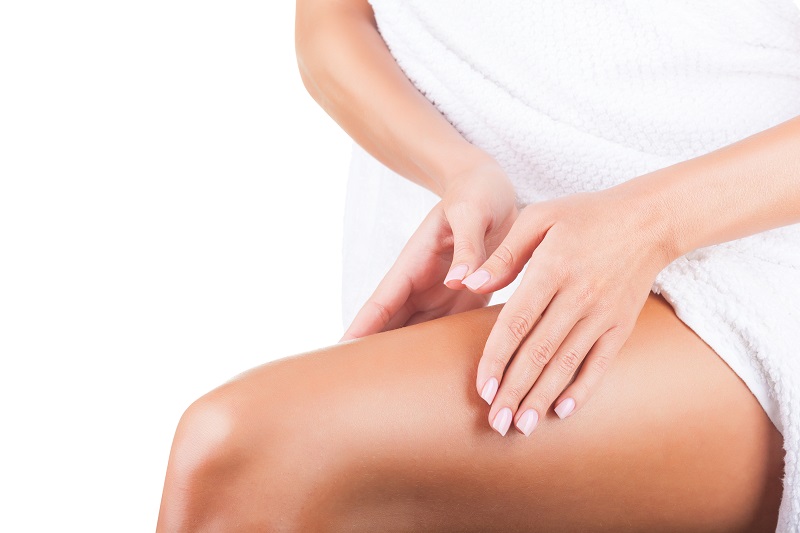
Every two to eight weeks, you could wax the hairs off your body. This is very common on the legs and the bikini line and works as a mechanical exfoliant. The downside is that it cannot replace your exfoliating routine, but become a regular part of it. Waxing is not done as frequently as people are recommended to exfoliate (once a week), but it is at least there as an option now and then.
One chemical hair removal method that doubles up as a chemical exfoliant is Nair. This happens at least once a month, and in many cases once a week. It could mean that you don’t need to exfoliate at home if you choose this hair removal method. Nair will destroy some of the hair below the skin, but not rip it out from the root, so the hair will grow back more frequently.
However, you will need to avoid the face with this method. The skin is too soft and sensitive for this harsher method.
A wet shave is something you can do across the whole body, and it is one of the most favoured options for facial hair removal among men. It can also be one of the favoured options for leg hair removal in women.
A wet shave over a dry shave is essential to get the full exfoliating routine. Your shaving brush is used to wash the face first and get the hair ready for removal. At the same time, it will remove the dead skin at the top. You can then use your razor to remove the skin. A straight razor or double-edge safety razor are the two best options as they get much closer to the skin. This not only gives you a closer shave but will also remove dead skin.
What Will You Need for a Full Body Exfoliating Routine?
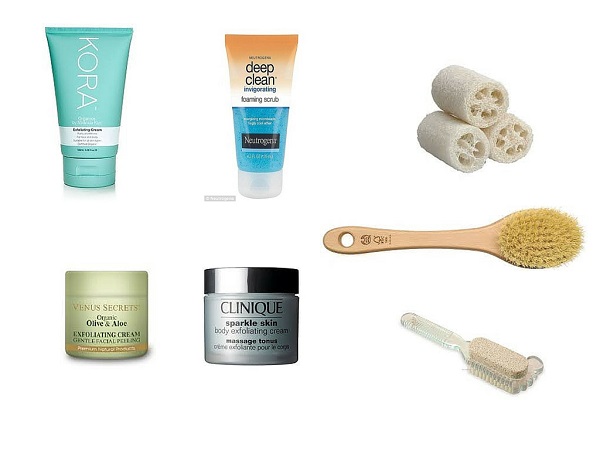
There are a few products that will help you for your full body exfoliating routine. A pumice stone is a good start for the dry and hard skin on your feet. You should also invest in a cleanser with exfoliating properties, such as a gel or cream, and a loofah or body brush. Body lotion for afterwards is also an important product to buy.
Some of the products will depend on your skin type. When used sparingly, a loofah is not going to damage your skin instantly but you may want to look at something softer if you do find irritation has become a problem. It’s also worth looking at the ingredients in any gel or cream you decide to buy.
Look for creams and gels that are for your skin type. For example, dry skin will likely need more of a moisturising-based cream while those with oily skin will want something to balance that out.
You’ll also need to think of cream for specific areas of your body. A facial exfoliating cream will not offer the best benefits for your back and legs as it will your face. Likewise, using a loofah on your face could lead to damage.
Remember that exfoliating is not replacing your overall beauty routine. You will still need a good facial and body cleanser, and still develop a routine that sees you cleaning your pores on a daily basis. Without this, exfoliating is much harder to do effectively and offer yourself the long term benefits.
Steps to Exfoliate Your Skin
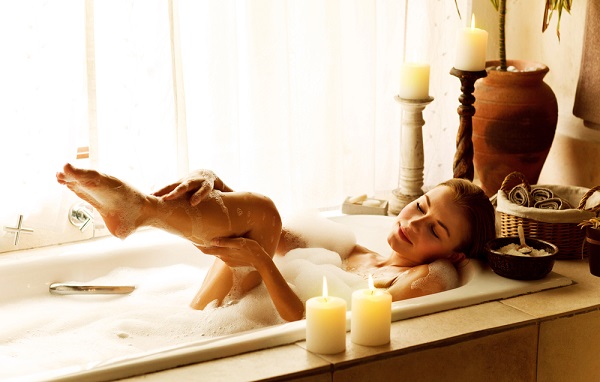
You’ll want to start your routine before you get in the shower. This will involve brushing your loofah up and down your body to get rid of any loose dry skin. You can do this in the shower basin without the water running to make sure you don’t get dead skin follicles all over the carpet! Start on the soles of your feet for this process, and get your skin ready for the next stage.
If you have any open cuts and wounds or you are sunburned, don’t exfoliate. You will just damage the skin and make the cut/sunburn worse.
Now turn on the water and step in the shower. Make sure you run the water all over your body. If you have any loose skin cells that haven’t quite fallen off, they will do now. The warm water will also open the pores, which means the exfoliating process much easier and quicker.
For this next stage, you may need to sit down on the side of the bath to avoid slipping. Use your pumice stone on the hard skin on your feet. Work on the calluses and rough spots, until they feel smooth. Some people may need to soak their feet first. You can do this in milk for 30 minutes before you get in the shower to make sure your feet are ready for the skin removal.
Next, move onto the loofah and place your cleanser onto it. Always run the loofah in a circular motion, and avoid scrubbing hard; this will just damage your skin! You can put more pressure onto the feet and legs compared to the bikini area and chest, because of the hardness of the skin. Always work your way up your body.
Don’t use the loofah on your face. Just put the exfoliating gel on your hands and rub your face gently in a circular motion. The same applies to your hands! Yes, you need to exfoliate them and you need to be aware that the skin is much softer than anywhere else on your body.
Use lukewarm water to rinse initially and then put your shower on the coldest setting that you can stand. This helps to close up the pores to protect them from any dirt and grime from your daily tasks.
Now it’s time for using your usual shower gel to wash your whole body. This is an optional step but well worth it, especially if you are showering after exercise or are excessively dirty due to your work.
Step out of the shower and use your moisturising cream before you dry. Place it all over your body, even on your face; although it is best to find one that is designed for facial use. The moisturising cream will not only lock in the soft goodness, but you’ll also block and protect the pores from dirt getting into them during the rest of the day.
You’ll need to moisturise your skin on a daily basis, even on the days that you don’t exfoliate. Exfoliation dries out the skin, and the last thing you want is flaky, dull looking skin anywhere on the body. The skin also naturally gets drier as you age, so a moisturising cream will help to protect you.
Exfoliating Without an Over the Counter/Prescription Scrub

You won’t always want to use a scrub that you can buy over the counter or get on prescription for exfoliating. Some of these will have chemicals that you’re not certain about or you may find that you suffer an allergic reaction to them. There is also some research that shows micro-beads are harming the wildlife and environment, and you may want to remove them from your beauty routine completely.
The good news is there are plenty of other options. The first is through exfoliating gloves, pads or loofahs. You can put your usual shower gel or cream on them and scrub. These methods can also be better for those harder to reach places, especially if you get a brush with a handle for your back!

Body peels work like chemical products, due to the fruit enzymes and glycolic acids inside them. They do a lot more than exfoliate and remove dead cells, too. The body peels help to prevent and treat ingrown hairs and acne breakouts because they clear the pores and remove hair follicles. If you struggle with unsightly ingrown hairs, just a few weeks use of a body peel will help you get the summer legs you deserve.
Some of the body peel out there are also suitable for the face. It is important to check the labels to make sure they are designed for the softer skin.
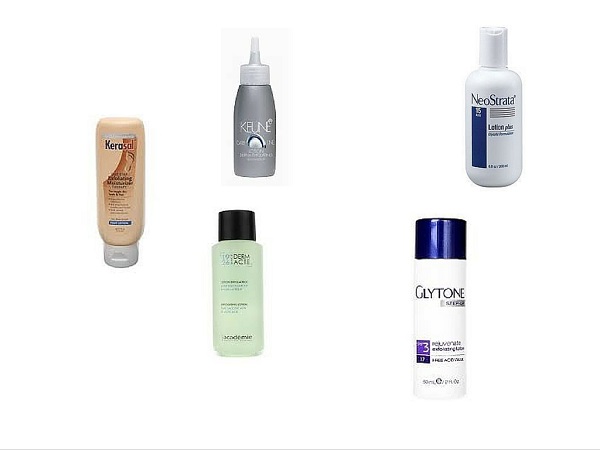
An exfoliating body lotion is another option, and can be extremely beneficial if you have keratosis pillars, which is where your skin is irritated due to excess scrubbing. Like the body peels already mentioned, the body lotions work through chemical methods, involving acids that leave skin looking beautiful and feeling soft.
There is an upside to the exfoliating body lotions over scrubs, too. You can use them in your daily beauty routine, rather than waiting each week. That means just one body lotion required. The ingredients are released much slower than other products, including facial masks, so you don’t get the full effect right away.
If you’re looking for something softer and better for the face, why not consider a face peel? This works in the same way as a body peel, but the chemical levels are more suitable for the softer skin. The peels also offer anti-aging and moisturising benefits, so you get the best of all worlds. Those who suffer from acne will also find the face peels beneficial because they can help to prevent and treat clogged pores.
Some face peels are suitable for overnight use. That means you can put them on at night and forget all about them until you come to wash your face the next morning.
Another facial option is a face lotion. Like body lotions, they use chemical options to get into the skin and remove the dead skin cells. Like face peels, they are formulated to protect the most delicate skin on the face. Avoid using body lotions in this area.
While some scrubs can lead to over exfoliating and pigmentation problems, exfoliating face lotions can help to prevent that. In some cases, they can treat discolouration on the skin, so are suitable for all skin types and colours.
Another option is to buy a rolling exfoliate, which will allow you to see the dead skin removed during the process. Some people just want to see physically that something is working, rather than wait hours or weeks for the results. The rolling exfoliates a gel substance and is suitable for all skin types. It is even beneficial if you have scars from acne or deep wrinkles, as the gel will get into the pockets. The gel also gets into the layers and stimulates collagen production.
If the products are still not your thing and you want a brush, there are skin care brushes around. Some are just right for the face while others are more suited for the tougher skin on other parts of the body. Skin care brushes for the face are beneficially for helping to reduce the oily nature of the T-zone. You can stop the extra collection of dead skin cells from these pores, and prevent troublesome acne.
Finally, dry brushing is an option. This is great for those who want something quick and easy while using alternative medicine. You will need to put a towel down to collect all the dead skin cells or do this in the bath, but you don’t need any water running.
Exfoliating is easy—in a circular pattern from your feet up as you would with any normal exfoliate mentioned above. You don’t need too much pressure on your skin, but the effects have not been found to be as long lasting as traditional exfoliating methods. The problem is that dry brushing drains the lymph nodes, so your skin looks smoother. It’s perfect for beach season.
There is no irritation with the dry brushing because the bristles are softer than loofahs and exfoliating gloves. Your skin is less likely to be red and blotchy, and you can do this more often than once a week. It also makes it suitable for all skin types and colours.
Can You Use Natural Exfoliating Products?
There are many different types of natural products out there that can act as exfoliates. Rather than spending money on products with chemicals in, you may be interested in these natural ingredients. Two of the biggest benefits are that you get to safe money (as the ingredients tend to be cheaper) and you get more natural nutrients directly absorbed into your skin.
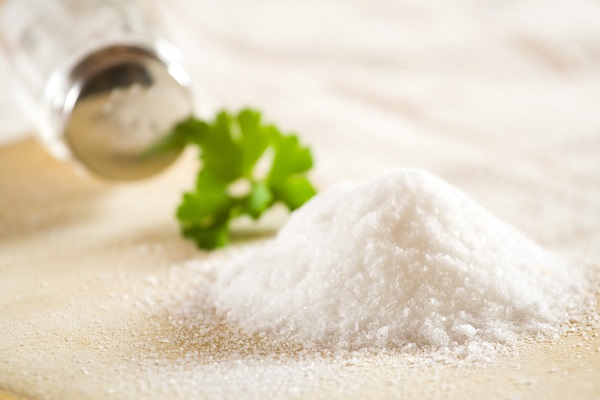 Watch out for using salt rather than sugar as a natural exfoliate. The salt will dry out the skin further and could upset the balance of the natural sodium in the body. Sugar is considered a much better option, or you could consider baking powder!
Watch out for using salt rather than sugar as a natural exfoliate. The salt will dry out the skin further and could upset the balance of the natural sodium in the body. Sugar is considered a much better option, or you could consider baking powder!

Baking soda is an excellent option for a soft, natural facial cleanser. You can also add it to your everyday facial cleanser to create a quick and easy exfoliate. Grains in the baking soda are small enough to work as an exfoliate, and by working in a circular motion with your hands, you’re still protecting the delicate facial skin.
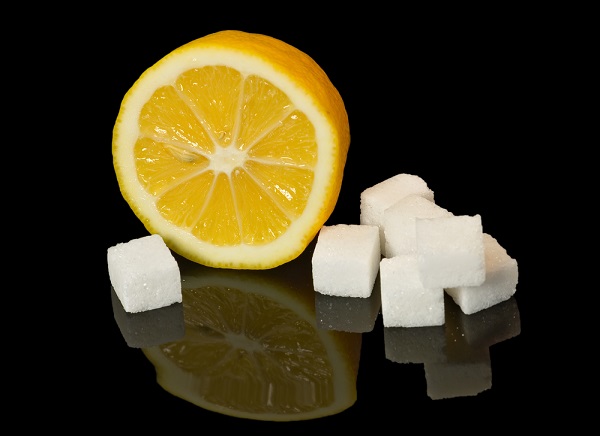
For the rest of your body, you could cut a lemon in half and dip the half in sugar. There are two benefits to this. First is that the sugar works as your exfoliate. The grains are small and rough enough to get through the skin on the harder parts of your body. Don’t use this on your face! The lemon will also help to add some vitamin C to your body; a vitamin that cannot be naturally held. Lemons are also great for clarifying the skin.

If you have sensitive skin, lemon may not be the best option. You can still make a sugar scrub, though. Instead of lemon, use honey. This ingredient has natural healing properties and is full of antioxidants, offering you other health benefits. You can add a little bit of lemon to your mixture to make it a little easier to apply on your body, and use a flannel or something similar to apply.
A third option isa coffee, due to the caffeic acid. This type of acid offers anti-inflammatory effects, which can be excellent for the exfoliating process, which normally causes inflammation. You may also find that as an anti-inflammatory it also helps to ease other health problems by absorbing quickly through the skin.

The caffeic acid also helps the production of collagen. This is not just great for exfoliating the skin, but helps to reduce the look of scars and prevents scarring in the future. The collagen helps with making the skin more elasticised. When at its optimum level, the skin will keep stretching and going back to its normal state without any physical reminder. When there isn’t enough collagen, the skin in the middle layers tears and you are left with scars.
Coffee also helps to stimulate the skin. This makes it look much healthier and can aid with the anti-aging process.
You only need to mix a tablespoon of ground coffee with a tablespoon or olive oil or water. By mixing with the oil, you offer many more health benefits to your skin, including moisturising. There’s no need to moisturise afterwards when using olive oil. The benefit of this scrub is that it is good for sensitive skin and can be used on the face. There’s also no need to use up fresh coffee. The used wet grounds from your morning brew.
If you are going to use this method, make sure you do it over a towel or a plugged sink. Coffee grounds tend to clog the drains, so you want to dispose of them in the bin.

A fourth option is using oatmeal as a natural scrub, and this is another option that is good for the face. Many people swear by oatmeal and not just for exfoliating. It makes an excellent facial mask for rejuvenating the skin and cleansing completely. It can also help to heal sunburn, normalise the oil levels in the skin and help to hydrate the skin. Oatmeal is also an excellent option for those with sensitive skin and people with psoriasis, eczema and other skin conditions.
Despite salt sometimes drying out the skin, a small amount can be mixed with oatmeal and water to create a paste to apply directly to the face and body. The salt just helps to boost the exfoliating process, so you could use sugar or even baking soda instead. Rub the mixture into your skin, using circular moments to get really into the pores. Leave it for 10 minutes before rinsing it off, so it can clean and help fight against acne.
If you do have oily skin, you may find that cucumber, tea tree oil or witch hazel are worth adding to your exfoliating mixtures. They work with any other natural ingredients and help with the tightening of the skin. This is essential to help limit the amount of oil that is produced in the future. You will also find that your skin is soothed afterwards.
Medical Treatments for Exfoliating the Skin
There are two main types of medical treatments for exfoliating: dermabrasion and microdermabrasion. Both are suitable for most skin types and colours, but you should still watch out for doing it too much.
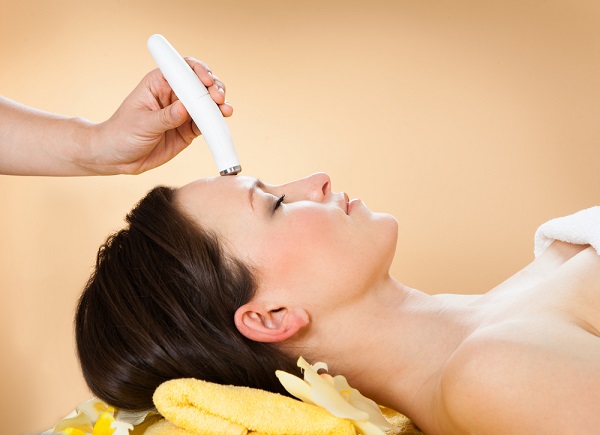
Dermabrasion is commonly used to improve scars from chicken pox, acne and accidents. It is not that effective of birthmarks, but it can help to soften and exfoliate the skin. It is best for people who have fair skin because it can cause discolouration. There is some “down time” afterwards to recover, as you will need to have an anaesthetic used. Your consultant will go through your options and discuss the dangers of anaesthetic; similar risks as if you had minor surgery.

Microdermabrasion is best for all skin colours and types, as it does not lighten the pigmentation. However, it is not as good on stretch marks, wrinkles and other deeper scarring issues. That being said, it is less intrusive and takes less time for the skin to heal afterwards. Both cause some irritation and redness, but microdermabrasion will only do it for 24 hours or so. The reason for the quicker healing is that the process does not go as deep into the skin because there is no anaesthetic involved.
You will need to see a consultant for both of these options, although there are some home microdermabrasion kits. The home kits can be effective, but are not as big as the ones that a dermatologist can use.
So, how do they work? With dermabrasion, you will need to visit your doctor’s office and you may need to take medication. Your doctor will then clean your skin thoroughly and then give you the local anaesthetic so you can go through the treatment. An instrument is used to do the procedure. This instrument has an abrasive wheel and uses a high speed to remove all the outer layers of your skin. If there are any irregularities within the skin’s surface, they will be removed at this time.
The time it takes will depend on your skin type and your consultant. All procedures are done as a day patient, so you will never need to stay in the hospital overnight.
Microdermabrasion uses crystals instead of an abrasive wheel. The crystals are tiny, like grains of salt or sugar, and are gently sprayed onto your skin. The tool is then used in a circular motion to remove the top layer of the skin, where the dead skin cells are.
This is a procedure coming into more beauty spas in the western world because it is so rejuvenating and beneficial for all. Your skin will look much brighter and softer, and after 24 hours or so there will be no redness.
After both your procedures, your skin may feel a little tender touch. With dermabrasion, once the local anaesthetic has worn off you may feel like it is sun burned for a few days. This is known as “brush-burn,” and is very common. You may be given medication to help ease some discomfort, but very few patients complain of pain. It is more of tenderness.
Within 10 days, you should be fully healed after dermabrasion and you will usually see this process happen. Your pinker skin will start to turn back to its normal colour. This can take longer than the actual healing, and it may be between six and eight weeks. The good news is that you can cover this with makeup if you need to. In most cases, you’ll be back to your normal routine within 14 days, but you should avoid the sun unless you have a sunscreen with at least SPF 30 afterwards. Remember that you have exposed another layer of skin, and you will burn much easier. You shouldn’t leave the house without sunscreen anyway, as the UV rays are harmful and ageing.
As mentioned microdermabrasion takes around 24 hours to heal. You’ll feel like your skin is tight and dry at first, and it will look a little pink. Like dermabrasion, this is mainly due to the removal of the first layer of skin. You can use moisturising cream—natural or over the counter—to help get rid of the tight, dry feeling. If you need to go outside, remember to use SPF 30 or higher sunscreen.
For many patients, makeup should be avoided for at least 24 hours after the microdermabrasion process. You’ll not likely want to touch it during this time to start with. After this, you can use it to hide any redness that may still be around after the procedure.
As with any medical produced, there are side effects to these two procedures. The microdermabrasion carries the least, due to no anaesthetic and a lighter procedure. You will usually find the biggest issue is the crystals getting into the eyes if they have been left unprotected.
There are more side effects to dermabrasion, including the skin changing colour. In most cases, this is a temporary side effect but it can be permanent. There is also the possibility of infection or a scar forming. It is important to find someone who is experienced in dermabrasion to avoid the scarring issue as much as possible.
Dermabrasion cannot be done at home, but it is possible to do some microdermabrasion without visiting a professional. There are products available that allow people to get the spa treatment for less, while in the comfort of their homes. You can often feel more relaxed, but there are other risks associated with doing this.
Even if you have it at home, you will want to avoid doing it too often. Like with normal exfoliating, there is no need to do this procedure more than once a week. It can replace your exfoliating routine completely, or it can be used every other week and used in conjunction with your current routine.
Another option that is sometimes raised by doctors is a chemical peel. This is very similar to a facial or body mask but is often much stronger. It is highly effective in a battle against acne, but it is certainly not suitable for all types of skin. If you have sensitive skin, you may find that this is too rough for you.
Exfoliating is something that you need to do on a regular basis. It doesn’t matter whether it’s on your face or your body, it will create a beautiful, shiny and soft skin. The trick is not to overdo it and use the right products on the right types of skin. With softer, glowing skin, you can focus on enhancing it with makeup, rather than trying to cover it up every day!
Natural products certainly offer you the advantage of other health benefits. You can use products that will help you get your much-needed vitamins and minerals, helping to give you naturally healthier skin. Even if you don’t use a natural exfoliate, you can always create a natural moisturising cream for afterwards.

